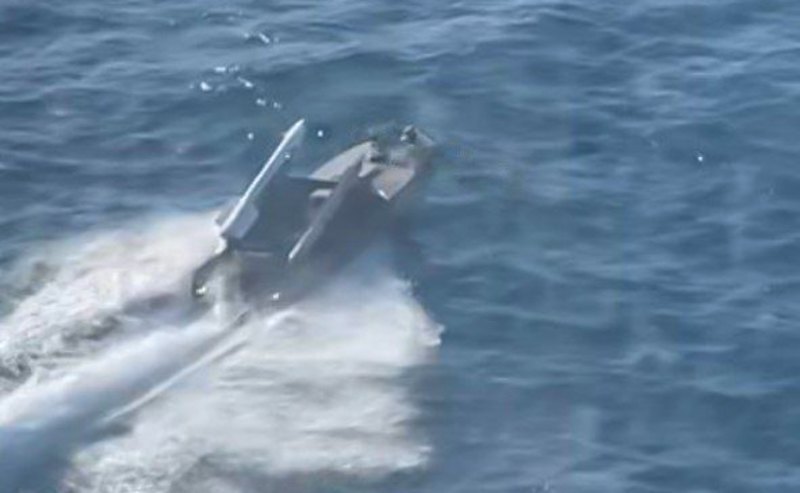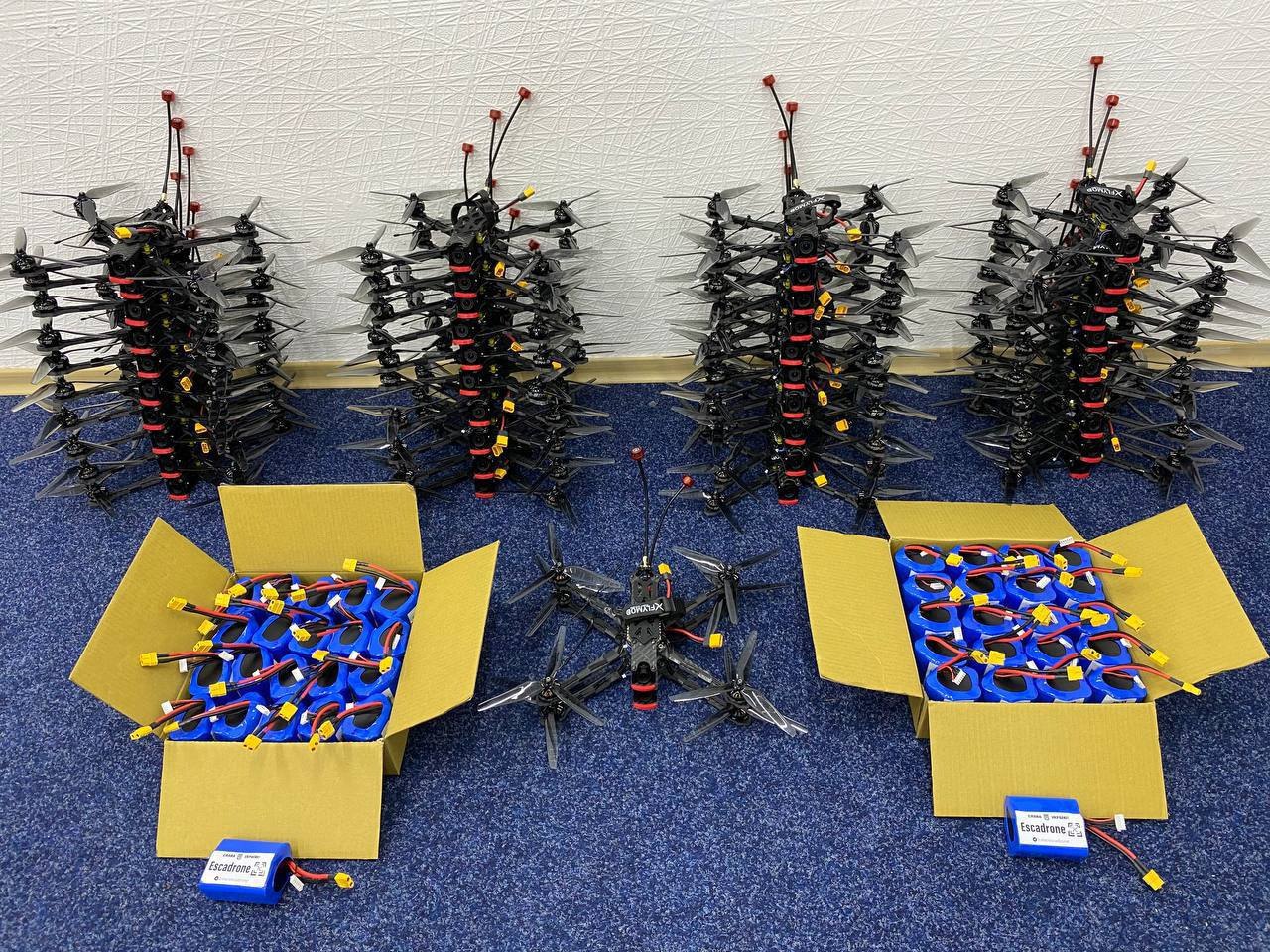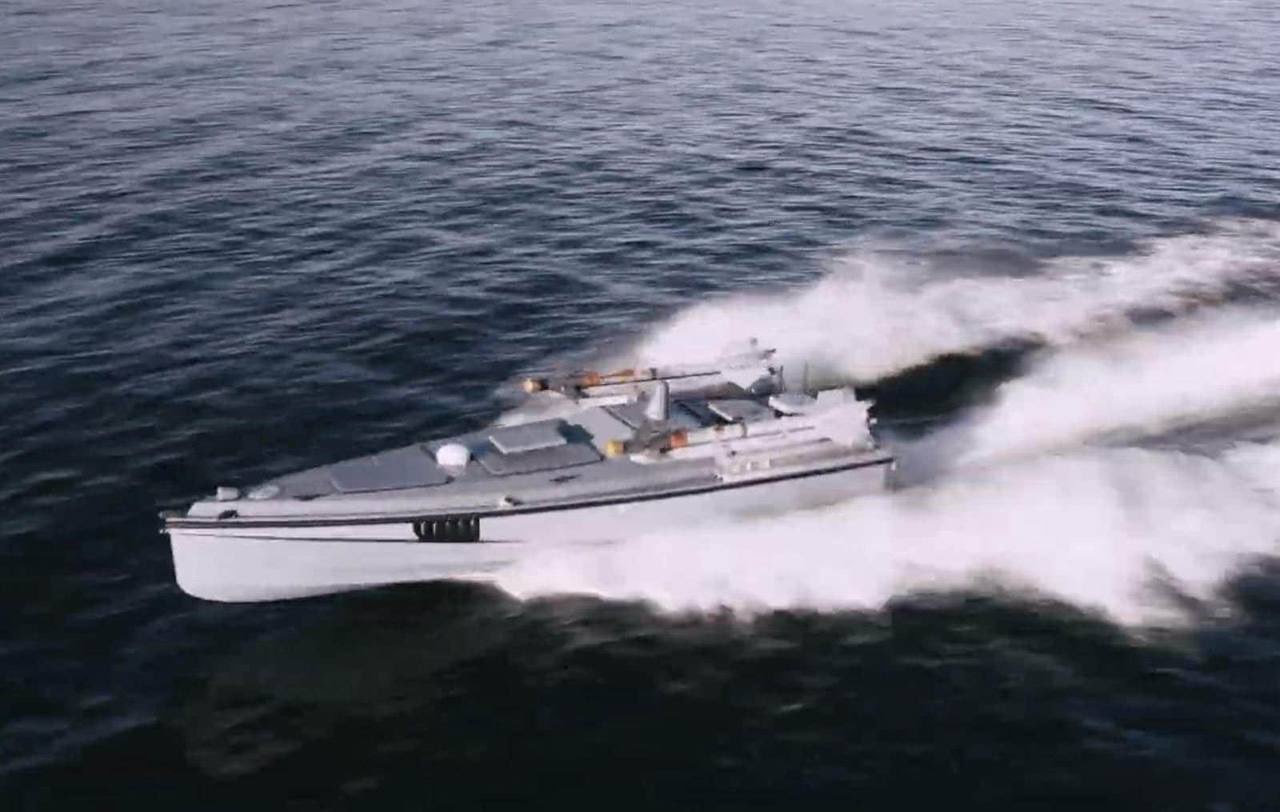
These ageing post-Soviet interceptors — often described as “the best aircraft for defending your airfield” — have been used to carry out dozens of strikes with French and American guided bombs.
And all this has been deployed against a formidable Russian military possessing air superiority and robust air defence systems.
Operating without self-concealing containers, without modern avionics, without dedicated reconnaissance or electronic warfare aircraft, and lacking airborne radar coverage, Ukrainian forces have still achieved hundreds of successful strikes — targeting headquarters, ammunition depots, forward positions, and bunkers — relying solely on precise coordinates.
Subsonic missiles that were no longer in production were used to sink the flagship of the Russian Black Sea Fleet via an experimental platform. These missiles were originally designed to penetrate the air defences of US carrier groups.
The same type of missile, adapted for surface-to-surface use, has since struck the Kerch ferry, an oil storage facility in Novorossiysk, and other targets in the Rostov Region, Sevastopol, and beyond.
Echelons of the S-300 and S-400 systems — which the Russian military claim have no analogues — failed to prevent these attacks.
In the context of a critical shortage of artillery shells in the EU and the US (it is worth noting that Ukraine received approximately three million 155 mm shells — half of Washington’s 1991 stockpile), Ukraine has developed drone capabilities as a makeshift solution: initially as reconnaissance tools, later as delivery platforms, and now as FPV strike systems.

Thanks to the efforts of numerous organisations involved in UAV repairs, 3D-printing spare parts, partnering with the diaspora and charitable foundations, and producing combat components in-house, the number of Russian vehicles destroyed now numbers in the thousands.
The logistics chain of the Russian army in its final kilometre has degraded to reliance on donkeys, motorcycles, and foot transport.
The Russian Black Sea Fleet was forced to abandon Sevastopol due to an improvised Ukrainian technology — a combination of jet ski, satellite communication, and explosive charge.
The list of affected targets is extensive. In practical terms, the amphibious capabilities of the Russian Black Sea Fleet have been compromised for the next decade and a half — the next generation of amphibious vessels is still under construction.
Step by step, Russian forces were ousted from Zmiyinyy Island, their radar and electronic warfare towers — previously used to monitor Ukraine’s coastline — were neutralised, they sustained further losses in Sevastopol, and now face similar threats in Novorossiysk.
Surface drones are now capable of laying naval mines, launching unguided missiles, acting as communication relays, and performing air defence roles.
Dozens of radar systems in Crimea — including those responsible for integrating air defence batteries — have been destroyed. Ukrainian long-range strikes have kept airfields ablaze for hours.
Ukraine has targeted gunpowder and explosives factories, fibre-optic nodes, military arsenals, and refineries — some hit three times — spanning locations from north of Murmansk to Yelabuga.
And just last week, two Su-30 aircraft belonging to the Russian naval aviation were destroyed by AIM-9 missiles launched from a maritime drone.
These modern aircraft had approached the unmanned vessel to a dangerously close range — within distance of cannon fire and unguided bomb release — exposing the fact that the Russian Aerospace Forces retain only a nominal connection to “space”, and their precision capability is limited to dropping guided bombs (KABs).
They paid the price: two jets were added to the growing list of downed aircraft, which already included two helicopters.
Beyond the headlines about these unprecedented developments, there are tangible consequences.
Russian pilots will now be even more cautious during take-off, forced to operate from greater distances and exit operational zones more rapidly.
The global supply of AIM-9-type missiles is vast (even if the US declines to supply them directly, Ukraine can access the secondary market), and infrared seekers remain among the most lethal guidance systems against aircraft.

This development implies more sea mines — of varying types and quality.
More unguided missile strikes on military barracks.
More repurposed air-to-air missiles launched from sea-based platforms.
Furthermore, the cost-effectiveness of this raid is undeniable: the Su-30 is far from a cheap asset.
Russians often boast about the infrastructure they brought to Ukraine — factories, ships, technologies, and theatres.
But what we are witnessing now is how Ukrainians fight and innovate.
And they do so under the most challenging conditions — with fewer aircraft, fewer sorties, fewer tanks, shells, and personnel — while under an effective naval blockade.
How many MiG-29s has Russia downed with drones?
Did the largest strategic bombing campaign in recent history succeed in halting Ukraine’s production of self-propelled artillery, long-range drones, and cruise missiles?
What has become of the Russian campaign against Ukraine’s power grid, its bridges across the Dnipro, and its western tunnels?
Now, we can begin to understand what Ukraine truly contributed to the empire — the calibre of its human capital — and why hundreds of thousands of casualties and injured servicemen were deemed necessary by Russia to attempt to drag it back.







